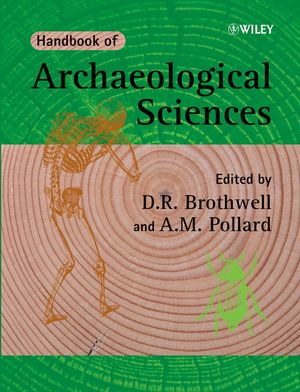Handbook of Archaeological SciencesISBN: 978-0-470-01476-9
Paperback
784 pages
June 2008
 This is a Print-on-Demand title. It will be printed specifically to fill your order. Please allow an additional 10-15 days delivery time. The book is not returnable.
|
||||||
D.R. Brothwell and A.M. Pollard have got together to create the
first large scale review of the many sciences which contribute to
modern archaeology for over 30 years.
The Handbook of Archaeological Sciences is intended to bring together a substantial overview of the sciences in archaeology in one complete volume. The book is organised under eight broad headings: dating, quaternary palaeoenvironments, human palaeobiology, developments in biomolecular archaeology, resource exploitation, archaeological prospection, conservation science in the archaeological context and statistical and computer applications. The contributors, who are all well-known in their own areas of expertise, bring together in each chapter the basic science and the relevance of this science to the overall goal of archaeology - understanding humans in the past.
This book is an invaluable source of reference for those interested in archaeology, anthropology, quaternary studies, geography, palaeoecology, computing, biology, chemistry and physics, those involved in commercial and local authority field archaeology units, museums and archaeological organisations.
The Handbook of Archaeological Sciences is intended to bring together a substantial overview of the sciences in archaeology in one complete volume. The book is organised under eight broad headings: dating, quaternary palaeoenvironments, human palaeobiology, developments in biomolecular archaeology, resource exploitation, archaeological prospection, conservation science in the archaeological context and statistical and computer applications. The contributors, who are all well-known in their own areas of expertise, bring together in each chapter the basic science and the relevance of this science to the overall goal of archaeology - understanding humans in the past.
This book is an invaluable source of reference for those interested in archaeology, anthropology, quaternary studies, geography, palaeoecology, computing, biology, chemistry and physics, those involved in commercial and local authority field archaeology units, museums and archaeological organisations.



